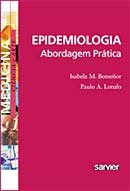Effect of immunisation against angiotensin II with CYT006-AngQb on ambulatory blood pressure: a double-blind, randomised, placebo-controlled phase IIa study
Background : Hypertension can be controlled adequately with existing drugs such as angiotensin-converting enzyme inhibitors or angiotensin II receptor blockers. Nevertheless, treatment success is often restricted by patients not adhering to treatment. Immunisation against angiotensin II could solve this problem. We investigated the safety and efficacy of CYT006-AngQb—a vaccine based on a virus-like particle—that targets angiotensin II to reduce ambulatory blood pressure.
Methods :In this multicentre, double-blind, randomised, placebo-controlled phase IIa trial, 72 patients with mild-to-moderate hypertension were randomly assigned with a computer-generated randomisation list to receive subcutaneous injections of either 100 μg CYT006-AngQb (n=24), 300 μg CYT006-AngQb (24), or placebo (24), at weeks 0, 4, and 12. 24-h ambulatory blood pressure was measured before treatment and at week 14. The primary outcomes were safety and tolerability. Analyses were done by intention to treat. This study is registered with ClinicalTrials.gov, number NCT00500786.
Findings :Two patients in the 100 μg group, three in the 300 μg group, and none in the placebo group discontinued study treatment. All patients were included in safety analyses; efficacy analyses did not include the five dropouts, for whom no data were available at week 14. Five serious adverse events were reported (two in the 100 μg group, two in the 300 μg group, and one in the placebo group); none were deemed to be treatment related. Most side-effects were mild, transient reactions at the injection site. Mild, transient influenza-like symptoms were seen in three patients in the 100 μg group, seven in the 300 μg group, and none in the placebo group. In the 300 μg group, there was a reduction from baseline in mean ambulatory daytime blood pressure at week 14 by −9·0/−4·0 mm Hg compared with placebo (p=0·015 for systolic and 0·064 for diastolic). The 300 μg dose reduced the early morning blood-pressure surge compared with placebo (change at 0800 h −25/−13 mmHg; p<0·0001 for systolic, p=0·0035 for diastolic).
Interpretation : Immunisation with CYT006-AngQb was associated with no serious adverse events; most observed adverse events were consistent with local or systemic responses similar to those seen with other vaccines. The 300 μg dose reduced blood pressure in patients with mild-to-moderate hypertension during the daytime, especially in the early morning.
Funding Cytos Biotechnology AG.
sexta-feira, 7 de março de 2008
Vacinação para hipertensão (resumo do artigo original)
Publicado hoje, no The Lancet. No site, há um vídeo discutindo o tema. Depois, comento.
terça-feira, 4 de março de 2008
Big Pharma está criativa: o ENHANCE trial
Passou despercebido por mim, durante as férias, um fato inédito: uma empresa, a Schering-Plough lançou no seu site e na imprensa leiga a suspensão de um ensaio clínico Effect of Ezetimibe Plus Simvastatin Versus Simvastatin Alone on Atherosclerosis in the Carotid Artery (ENHANCE) trial. Procurei o artigo original e, não achei. Descobri, agora que houve uma forma heterodoxa de comunicação científica: somente conclusões. O trial terminou em junho de 2006! JAMA apresentou comentário ácido sobre o ocorrido. (clique aqui)
O tráfico de droga com receita médica
Há muito discuto aqui, o uso e abuso de medicamentos que criam dependência que são comprados com receita médica. Felizmente, médicos estão diminuindo a má-prática de atender ao assédio de amigos, familiares e vizinhos e, já há falsários vendendo receitas devido à dificuldade em conseguir com médico. Nos Estados Unidos, onde o controle de prescrição é muito maior, a situação é muito complicada: 4,4% utilizam medicamentos controlados por razões não médicas. Vejam, o resumo do trabalhos publicado no Archives of Pediatrics and Adolescent Medicine. (março 2008)
Screening for Drug Abuse Among Medical and Nonmedical Users of Prescription Drugs in a Probability Sample of College Students. Sean Esteban McCabe, PhD, MSW Arch Pediatr Adolesc Med. 2008;162(3):225-231.
Objectives To determine the prevalence of medical and nonmedical use of 4 classes of prescription drugs (opioid, stimulant, sleeping, and sedative or anxiety) and to assess probable drug abuse among 4 mutually exclusive groups of medical and nonmedical use of prescription drugs.
Design In 2005, a Web survey was self-administered by a probability sample of 3639 college students (68% response rate).
Setting A large, midwestern 4-year university.
Participants The sample had a mean age of 19.9 years, and respondents were 53.6% female, 67.4% white, 12.1% Asian, 6.0% African American, 4.2% Hispanic, and 10.2% other racial categories.
Main Outcome Measures Medical and nonmedical use of prescription drugs was measured. Probable drug abuse was assessed using a modified version of the Drug Abuse Screening Test, Short Form.
Results A total of 40.1% of respondents reported no lifetime use of at least 1 of 4 classes of prescription drugs, 39.7% reported medical use only, 15.8% reported both medical and nonmedical use, and 4.4% reported nonmedical use only. The odds of a positive screening result for drug abuse were greater among medical and nonmedical users (adjusted odds ratio, 5.5; 95% confidence interval, 3.4-7.3) and nonmedical users only (adjusted odds ratio, 6.5; 95% confidence interval, 4.0-10.6) compared with nonusers. The odds of a positive screening result for drug abuse did not differ between medical users only and nonusers. Conclusions Nonmedical users of prescription drugs are at heightened risk for drug abuse, whereas medical users without a history of nonmedical use are generally not at increased risk. Drug abuse screening should be routine for college students, especially among individuals with any history of nonmedical use of prescription drugs
Assinar:
Postagens (Atom)
